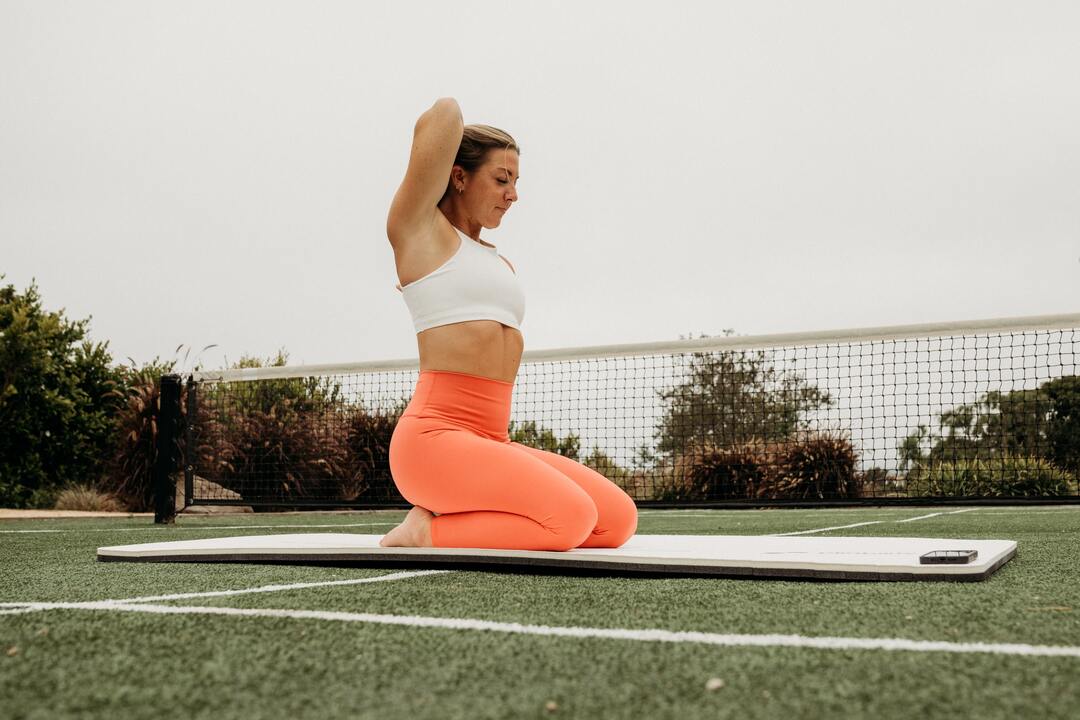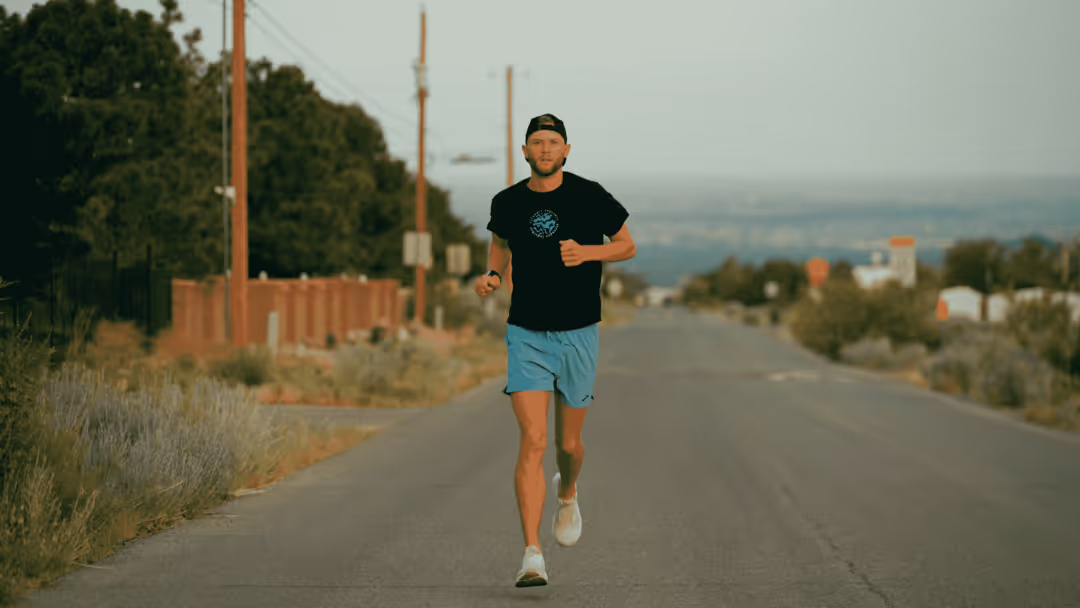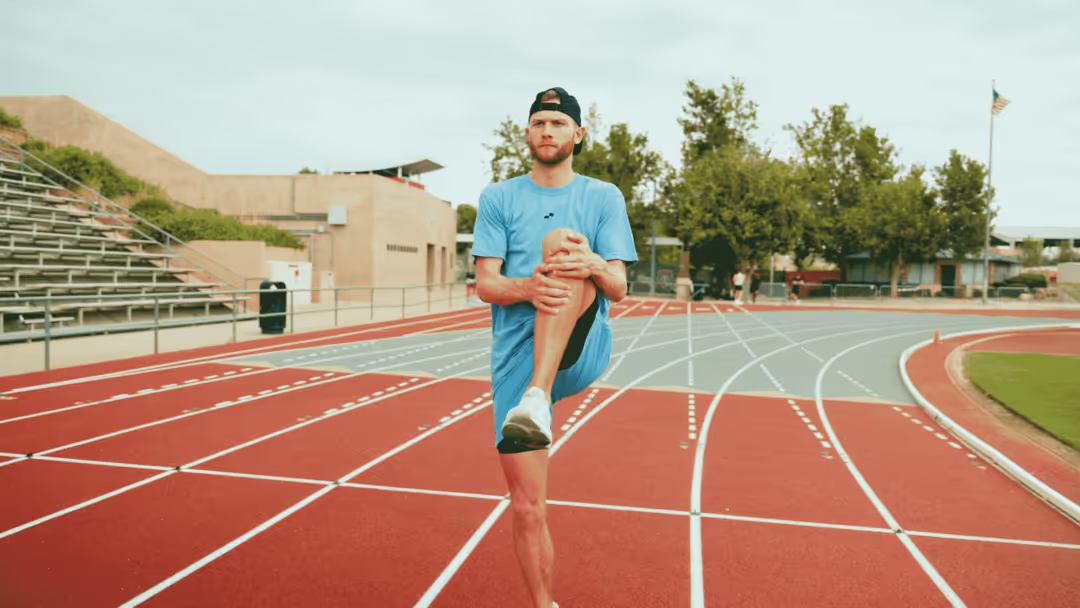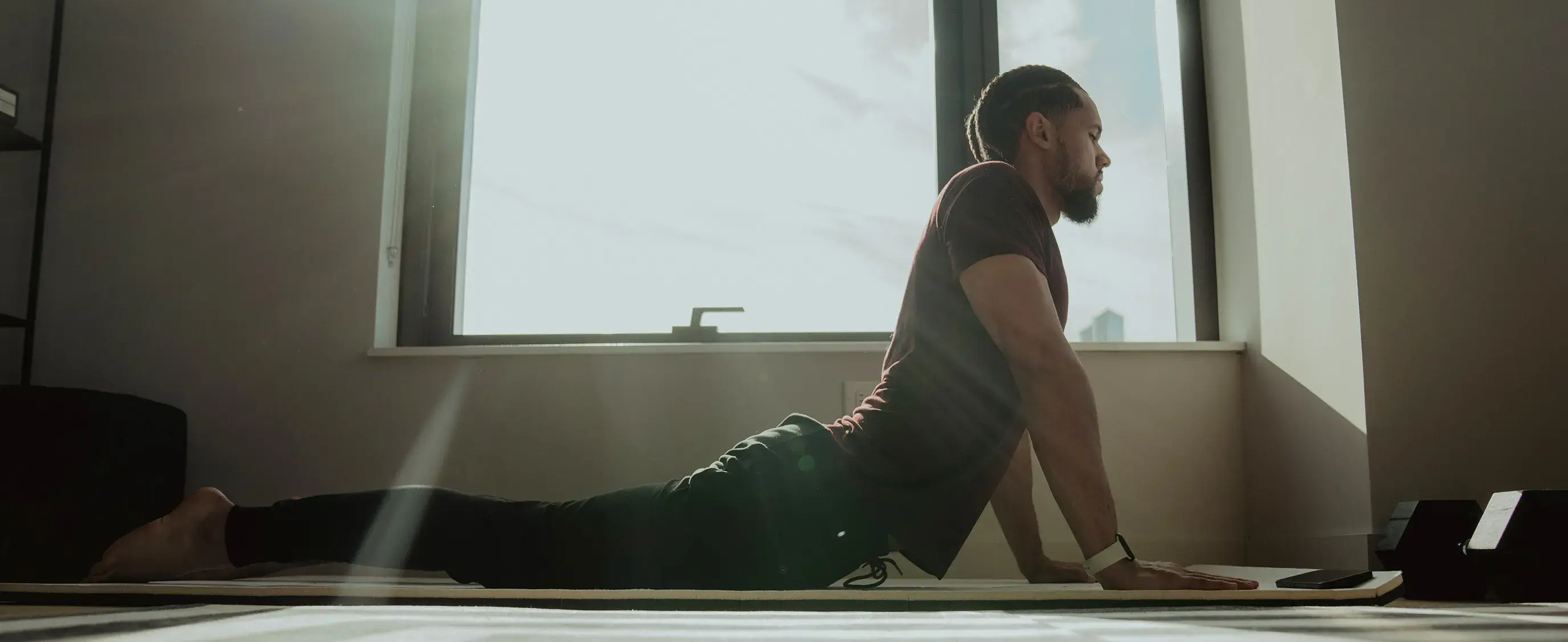We often push ourselves in workouts, driven by the promise of gains and performance boosts. But the secret sauce for progress isn’t just about the sweat, it’s also about what happens when we rest. Understanding why a recovery period between bouts of exercise is important can make or break your fitness journey. This recovery time helps your body adapt, reduce fatigue, and prevent injuries, ultimately maximizing your results. Whether you’re lifting weights or simply doing exercises for stiff neck and shoulders, learning how to rest and recover effectively ensures your body stays balanced and pain-free. In this article, we’ll explore how to use rest periods wisely to achieve your fitness goals. So, How to Recover Quickly From a Workout?
Mobility app like Pliability can be a great companion on this journey, helping you incorporate effective recovery techniques into your routine. With easy-to-follow mobility exercises, you can enhance your performance and reduce the risk of injuries, making recovery a seamless part of your fitness strategy.
What is the Recovery Period Between Bouts of Exercise?

The recovery period between bouts of exercise is the essential interval of rest and recuperation that occurs after a workout session, allowing the body to repair and strengthen itself.
During this time, physiological processes take place, such as:
- Muscle repair
- Glycogen replenishment
- Reduction of lactic acid buildup
It facilitates the body's adaptation to the stress of exercise.
This period is crucial for preventing overtraining and injury, as it provides the necessary time for the central nervous system to recover and for muscles to rebuild stronger and more resilient. By strategically incorporating recovery periods into a training regimen, athletes and fitness enthusiasts can achieve their fitness goals so they can:
- Optimize performance
- Enhance endurance
- Ensure sustainable progress
Rest and Recovery: What Does It Really Mean?
Rest and recovery are all about giving the body time to repair, rebuild, and strengthen itself between workouts. Dr. Karin VanBaak of the CU Sports Medicine & Performance Center explains why rest and recovery are critical for an athlete’s physiological and psychological well-being. “If you’re participating in sports, you’re breaking down your body. You’re taxing yourself and pushing yourself beyond your current level of fitness.”
Exercise, especially intense exercise, creates tiny tears in the muscles. Over time, as muscles heal, they eventually grow bigger and stronger. This process occurs during rest and recovery, not during the exercise session itself. “In order to see gains in fitness, in order for the body to keep doing what you want it to do, you have to give it enough rest to repair itself,” VanBaak said.
Active Recovery: The Short-Term Solution
Athletic trainers talk about two types of recovery:
- Short-term or active recovery
- Long-term recovery
What’s involved with active recovery? Short-term or active recovery occurs in the hours soon after intense exercise. Research shows that low-intensity exercise during the cool-down phase of your workout is associated with performance benefits. “I tend to think of short-term recovery as what you are doing that day,” VanBaak said.
“So if I go out for a six-mile run in the morning, what do I do afterward to make sure that my body and mind can recover from that single bout of exercise?” Active recovery increases blood circulation, which helps remove waste products from soft tissue that have been broken down by intense exercise.
Fresh blood flow then delivers nutrients that help repair and rebuild:
- Muscles
- Tendons
- Ligaments
Long-Term Recovery: The Bigger Picture
Long-term recovery involves rest and recovery periods that are built into a seasonal training schedule. It also may include days or weeks of rest and recovery incorporated into an annual athletic program. “I take care of a lot of runners,” Van Baak said. “Where we see people get into trouble is when they’re going from one big training block to another big training block to yet another big training block without taking several weeks off in between.”
How long should a recovery period last? The duration of a recovery period depends on factors such as your age, sport, and training regimen. The American Council on Exercise (ACE) suggests that athletes who engage in high-intensity exercise should schedule a rest day every seven to 10 days.
Spotting Overtraining Syndrome
What are the signs of overtraining syndrome? Studies suggest that overtraining syndrome affects roughly 60% of elite athletes and 30% of non-elite endurance athletes.
The ill-effects of overtraining syndrome include:
- Increased body fat
- A higher risk of dehydration
- Lower libido
- Mood disturbances
Once overtraining syndrome sets in, it can be challenging to reverse. “People who over-train often have trouble with performance,” Van Baak said. “Maybe they’re getting a lot more fatigued from sports activity that used to be easy for them. They may even be getting more tired in their regular lives outside of sports. They may be dealing with mental burnout or a lack of interest in a sport they used to enjoy.”
Recognizing When Rest is Necessary
What are the signs that athletes need a rest day, as in immediately? If you listen closely to your body, it will tell you when you need to skip your usual workout and take a rest day.
When researchers surveyed 605 competitive athletes, they found that these were the top reasons to take a rest day:
- General feelings of fatigue
- Unexplained decrease in performance (generally lasting between one week and one month)
- Musculoskeletal aches and pains
The Importance of Passive Recovery
What’s your opinion of ‘passive’ recovery (i.e., doing nothing)?
- “I think days of doing nothing are really important,” VanBaak said. “I want almost all of the athletes I take care of to take a full rest day every week.”
- “There are a lot of misconceptions about passive recovery,” she added. “I often ask people how many rest days they’re taking or when is that last time they took two weeks off. They’ll tell me, ‘Oh, at the end of August, after a big trail race, I took two weeks of just easy running.’ That’s consistent with an ‘active’ recovery. But it’s also really important to just give the body some time off.”
- “That’s consistent with an ‘active’ recovery. But it’s also really important to just give the body some time off.”
Do Older Athletes Need More Rest And Recovery?
- “I want to say the answer is yes, that the older people get, the more time they need for rest and recovery. But our younger athletes need to be cognizant of their rest and recovery time in very specific ways as well.”
- “In the world of pediatric sports medicine, we see more and more kids and young athletes dive full time into one sport at an early age,” VanBaak said.
- “There is a lot of good data showing that committing full time to a single sport increases the risk of burnout and injury while decreasing people’s performance. Research shows that young athletes who compete in multiple sports and take off a good amount of time multiple times a year are healthier, happier and more successful.”
- “There’s less data about that in adults,” she added.
- “But I think people in our practice, especially here in Colorado where our patient population is so active, would tell you that the athletes who are the happiest and least likely to experience injury or burnout are those who do multiple sports throughout the year.”
- “It’s better for the body to be doing multiple different motions. And it’s also good for the mind to switch things up,” she said.
What Is An Often Overlooked Aspect Of Rest And Recovery?
“Something I see a lot in my practice is that many people under-appreciate how important overall nutritional healing is to support recovery,” VanBaak said.
During short-term recovery, consuming the right foods and drinks after exercise helps replenish your glycogen stores in muscles and optimizes protein synthesis.
- “I see a lot of people who really increase their running mileage during the spring and increase their calorie intake by just a little bit. They end up with a mismatch between how much energy they’re expending and not making up for it by increasing their calorie intake.”
- “That kind of chronic under-fueling can look a lot like overtraining syndrome,” she said.
Should Athletes Keep A Daily Training Log To Track Their Progress Or Lack Thereof?
“For most people, keeping a log is a good idea,” Van Baak said. “Especially for those who are training for something specific, it’s a good idea to keep track of what you’re doing, what recovery looks like, anything special about nutrition, and how did you feel.”
“Keeping a log is also useful to ensure that you don’t let things slip, that you remember to take your rest days, and engage in proper fueling and rest habits.” Some everyday recreational athletes may not need to keep a log. “I mostly base my athletic activities on what I feel like doing on any given day, seeing what the weather is good for, seeing if conditions are right to go the mountains,” she said.
But Other Recreational Athletes May Find It Essential
“In the sports medicine clinic, we frequently see people who accidentally get into overtraining syndrome because they like to do so many things,” VanBaak said. “They’re almost forgetting to give themselves any rest days. So it can definitely help people be more intentional and mindful about what they’re doing.”
Related Reading
- Signs of Injury
- Hip and Knee Pain
- Why Do the Insides of My Legs Hurt When I Run
- Deadlift Back Pain
- Signs of Overtraining Cycling
- Deloading Week
- How Do You Know if You Tore Your ACL
- Injuries in Weightlifting
- How to Prevent MCL Injuries
Why is a Recovery Period Between Bouts of Exercise Important?

Recovery is essential for optimizing physical performance and mental well-being. It’s not just a break from exercise; it’s a crucial phase that facilitates growth and repair. Let’s explore why recovery is vital.
Physical Benefits: Muscle Repair and Growth
Exercise causes microtears in muscles. This is normal, but muscles need time to heal and grow stronger. During recovery, muscle fibers repair, leading to increased strength and performance. Without proper rest, we risk overtraining and injuries.
Energy Restoration: Replenishing Glycogen
When you exercise, your body uses glycogen for energy. Recovery allows glycogen levels to replenish, ensuring you have the energy for your next workout. This process helps maintain performance and prevent fatigue.
Connective Tissue Repair: Strengthening Joints
Recovery helps repair and strengthen tendons and ligaments. These structures support your joints and are crucial for preventing injuries. Allowing them to heal reduces the risk of issues like tendonitis and stress fractures.
Reduced Inflammation: Promoting Healing
Intense exercise can cause inflammation and swelling. Recovery helps minimize these effects. During rest, improved blood flow supports healing by delivering nutrients and removing waste. This reduces discomfort and speeds up recovery.
Immune Function: Staying Healthy
Exercise can stress the immune system, especially without proper recovery. Rest allows your immune system to recover and strengthen, reducing the risk of illness. This helps you stay healthy and continue training effectively.
Psychological Benefits: Easing Mental Fatigue
Regular exercise is mentally demanding. Recovery helps alleviate mental fatigue by giving your brain a break. This rest enhances focus and prevents burnout, helping you stay motivated.
Improved Focus: Enhancing Cognitive Function
Lack of rest can impair cognitive abilities. Recovery periods allow your brain to reset, improving focus and decision-making. This is important not only for exercise but also for daily life.
Stress Reduction: Finding Balance
Exercise can relieve stress, but overdoing it can have the opposite effect. Recovery provides an opportunity to engage in relaxing activities. This helps reduce stress hormones and promotes mental balance.
Resilience: Building Mental Strength
Taking time to recover allows for reflection on progress. Celebrating achievements and personal growth enhances mental resilience. This boosts motivation and helps you stay committed to your goals.
Enhanced Sleep: Supporting Overall Recovery
Recovery and sleep go hand in hand. Quality sleep is essential for physical and cognitive recovery. Prioritizing rest improves sleep quality, benefiting your performance and well-being.
Related Reading
- How to Prevent Peroneal Tendonitis
- Why Do My Knees Hurt After Squats
- How to Prevent Arthritis in Hands
- How to Prevent Achilles Tear
- Ankle Sprain Prevention
- How to Prevent Knee Injuries
- Shoulder Impingement Exercises to Avoid
- Ankle Mobility for Runners
- How to Avoid Rotator Cuff Injury
Strategies for Optimizing Recovery Between Exercise Sessions

Factors Influencing Recovery Periods
The time you need to recover from exercise varies. Several factors determine how long you should rest. Intensity and duration of exercise are key. If you’ve just finished a high-intensity workout or a long endurance session, expect to need more recovery time. Your muscles have undergone significant stress and need time to repair.
Personalizing Recovery to Your Body’s Needs
Your individual fitness level matters too. If you’re new to working out, your body may need longer to adjust and recover. As you get fitter, recovery might become quicker. Similarly, age plays a role. Older adults may require more recovery time as the body naturally takes longer to heal.
Overall health and well-being are crucial. Chronic illnesses or injuries can slow down recovery. Proper nutrition and hydration also affect how quickly you bounce back. Lastly, listen to your body. Everyone’s response to exercise is different. Pay attention to fatigue and soreness, and adjust recovery times as needed.
Effective Strategies for Enhancing Recovery
To make the most of your workouts, recovery is essential. Here are some practical strategies to help you recover better.
Prioritize Rest and Sleep
Rest and sleep are vital components of recovery. Aim for 7-9 hours of quality sleep each night. This allows your body to repair and regenerate. Establish a calming bedtime routine to create an environment conducive to restful sleep.
Engage in Active Recovery
Keep your body moving with light activities like:
- Walking
- Swimming
- Yoga
These promote blood flow and help remove waste products from your muscles. Active recovery can reduce muscle soreness and aid in recovery.
Eat for Recovery
Fuel your body with balanced meals. Protein helps repair muscle tissue, while carbohydrates replenish glycogen stores.
To support recovery, include:
- Lean meats
- Fruits
- Vegetables
- Whole grains
- Healthy fats
Stay Hydrated
Water is crucial for muscle function and recovery. Ensure you drink enough water before, during, and after workouts. Staying hydrated helps with nutrient delivery and waste removal.
Incorporate Stretching and Foam Rolling
After exercise, stretch to improve flexibility and reduce muscle tension. Use a foam roller to release tight muscles and enhance range of motion. These practices can aid in recovery and prevent injuries.
Manage Stress
Stress can impede recovery. Incorporate stress management techniques into your routine. Practice deep breathing, meditation, or mindfulness to help alleviate stress. Engaging in relaxing activities is also beneficial.
Progress Gradually
Avoid sudden increases in workout intensity or duration. Gradually progress to allow your body to adapt. This reduces the risk of injuries and overtraining.
Listen to Your Body
Pay attention to what your body tells you. If you’re feeling overly fatigued or experiencing persistent soreness, give yourself more rest. Adjust your training schedule to ensure proper recovery.
By integrating these strategies into your routine, you can enhance recovery and support your fitness journey.
Improve Your Flexibility with Our Mobility App Today | Get 7 Days for Free on Any Platform
Recovery after exercise is not just about resting; it’s an active process that involves techniques like improving flexibility and mobility. Pliability provides a unique approach to this, offering a robust library of videos that help athletes and fitness enthusiasts enhance their range of motion and reduce pain.
These resources are tailored to complement your current fitness routine, making recovery an integral part of your performance strategy. By focusing on mobility, Pliability helps you move better and recover more efficiently. It’s like having a specialized coach guiding you through the recovery process, ensuring you’re ready for your next workout.
Why Recovery Is Essential for Performance
Recovery is more than just taking a break. It’s a crucial period that allows your body to repair and strengthen itself between exercise sessions. This helps to prevent injury and improve performance over time. If you skip or skimp on recovery, you risk overtraining, which can lead to fatigue, decreased performance, and even injuries.
Pliability offers tools that support recovery by enhancing mobility and reducing pain, helping you bounce back more quickly and effectively after workouts.
Identifying Mobility Issues for Better Recovery
Mobility plays a significant role in recovery. Poor mobility can limit your performance and increase the risk of injury. Pliability’s body-scanning feature helps identify specific mobility issues, allowing you to target them with precision.
This personalized approach ensures that your recovery and performance improve hand in hand. By addressing these issues, you’ll not only enhance your recovery but also your overall athletic ability.
Related Reading
- Glute Activation Exercises
- Eccentric Quadriceps Exercises
- How to Squat Without Knee Pain
- Injury Prevention for Runners
- How to Start Working Out Again After Knee Injury
- Signs of Overtraining Running
- Scapular Mobility Exercises
- SI Joint Mobility Exercises
- Running Injury Prevention Exercises
.avif)
.jpg)

.jpg)
.jpg)
.jpg)


